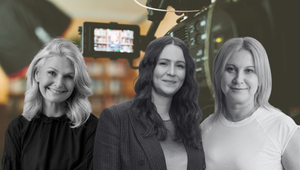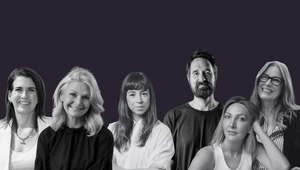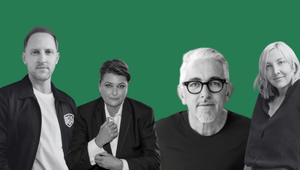
The Directors: Sam Kelly

Renowned for helming the top-grossing New Zealand film 'Savage' director Sam Kelly is a master at weaving authenticity into his creations. His skilful portrayal of genuine performances, profound character connections, and evocative moods defines his work. But Sam's masterful storytelling shines in a commercial reel too that brims with character and charm.
Trained by acclaimed acting coach Judith Weston, whose tutelage benefited luminaries like Alejandro G. Iñárritu, Steve McQueen, and Ava DuVernay, Sam possesses a keen ability to capture truth in both actors and non-actors alike.
His short film 'Lambs' clinched both the Jury Prize and Audience Award at the New Zealand International Film Festival. The film's journey continued with prestigious screenings at the Berlinale, Clermont Ferrand, Melbourne, and Uppsala international film festivals.
Recipient of the SPADA Young Filmmaker of the Year award, Sam's talents were recognised early in his career. Armed with a Master's in Screenwriting from New Zealand's esteemed International Institute of Modern Letters, he currently channels his passion into scripting his upcoming projects and working for advertising.
LBB sat down with Sam to chat about his journey, his insights on advertising's role, and the harmonious coexistence of features and commercials in his exceptional trajectory.
LBB> What elements of a script set one apart from the other, and what sort of scripts get you excited to shoot them?
Sam> I love a good mood piece. If I’m vibing with the feeling of the script, I get excited about creating a little cinematic world based on that feeling.
LBB> How do you approach creating a treatment for a spot?
Sam> I start by reading the script a few times to let images and ideas emerge. Writing about what works and doesn’t work helps build a sort of thesis about the direction. If I feel like one particular direction is working, I’ll start moving into more detail imagining and layering different elements. When the vision feels like it’s cooking, then finding image references to communicate the different elements. DA’s are obviously awesome at helping with this. I love trying to find big picture ideas for sound design and music at the same time as I’m finding the visuals. Sound design is a sneaky awesome way to subtly create mood through the tone of the elements. Collaborating with the sound designer and composer is one of my favourite parts of the process.
LBB> If the script is for a brand that you're not familiar with/don’t have a big affinity with or a market you're new to, how important is it for you to do research and understand that strategic and contextual side of the ad? If it’s important to you, how do you do it?
Sam> I like to understand as much as possible about the strategy and context of an ad, ideally before I start going too far down any certain path, so I’m confident I’m creating a vision that works for the client. So listening to the creatives, asking questions, and bouncing ideas off them.
LBB> For you, what is the most important working relationship for a director to have with another person in making an ad? And why?
Sam> The producer is the most consequential relationship, making sure your vision works within the parameters and pulling it all together. But my favourite creative collaboration is with the cinematographer…finding the world and visual style together. I love jamming ideas, watching references together, and discussing the feeling of different elements. We have so many talented cinematographers in NZ and Australia now creating really beautiful work.
LBB> What misconception about you or your work do you most often encounter and why is it wrong?
Sam> Because of my films Lambs and Savage, it’d be easy to assume I’m only interested in a gritty, naturalistic style. And don’t get me wrong - I’d love to create an LTSA ad, but I also really enjoy working in a dry comic space or with playful moods.
LBB> What type of work are you most passionate about - is there a particular genre or subject matter or style you are most drawn to?
Sam> I’m writing a dark fantasy feature film at the moment, and I’m really loving the world- building and dreamy moodiness I’m playing with. I’m really attracted to creating these quite expressive worlds and then placing authentic performances in them to anchor them in reality.
LBB> What’s the craziest problem you’ve come across in the course of production – and how did you solve it?
Sam> With fading light on the last shot of a shoot about bush safety, we needed a crew member to hurry up a hill beside a bush track to wave a torch in the shot while our actor looked across at it. Our brave gaffer volunteered and hurried off, but unfortunately, the dense undergrowth of the hill was way harder to scramble up than it looked… and we couldn’t spot the light from the torch. So we had to quickly shoot it as a plate to fix it in post. As it was now dark, our poor gaffer got lost in the bush. Not a great look on a shoot about getting lost in the bush. Fortunately, we had a bush expert with us who went to go find him, but they couldn’t… eventually our gaffer emerged out of the bush a few streets away, perfectly calm and in good humour. I still owe him a beer. Legend.
LBB> How do you strike the balance between being open/collaborative with the agency and brand client while also protecting the idea?
Sam> I like to be open to ideas from anyone on set, but particularly clients, as it’s their brand. I try to understand the offer and play with the best version of it in my head. If I believe a client’s idea will have negative consequences, then chat through options with them till you get to a solution. Rather than regarding this process as compromising a hermetically sealed vision, I think it’s about doing the best you can with the parameters you have.
LBB> What are your thoughts on opening up the production world to a more diverse pool of talent?
Sam> We need to be diligent in removing barriers and implicit bias in our industry. Our storytellers need to be as diverse as the real-life stories that make up our developing
culture.
LBB> Are you open to mentoring and apprenticeships on set?
Sam> I’m currently mentoring a talented emerging female director. I bounce around ideas with her about projects, process and career paths, and tell her she’s awesome (because she is). Directors are often lone wolves so connecting with other directors who understand the challenge of our crazy lives feels important emotionally as well. I’m currently on the board of our guild (DEGNZ) and enjoy the feeling of community, along with trying to improve the pathways for directors.
LBB> How do you feel the pandemic influenced the way you work in the longer term? Have you picked up new habits that you feel will stick around for a long time?
Sam> The increased openness to collaborate with people from different places is a great positive. I’m based in Wellington and jam creatively with people across the country and internationally.
LBB> Which pieces of work do you feel really show off what you do best – and why?
Sam> Outdoor Safety is a performance piece about a complex moment between a proud father and his estranged son. I loved this opportunity to cast and work with two strong actors to find emotional detail. Beautiful naturalistic cinematography from Matt Henley and music by Arli Liberman.
The Master Plumbers concept started as a dad-joke but fortunately the client was into turning it into an amusing psychological horror about a man’s war with a dripping tap and the dangers of DIY. I loved this opportunity to play with a darker tone and raise the dramatic stakes in a ridiculous way for an everyday problem.
Lambs is about the difficult situation of an at-risk teenager. I love working with kids and non-actors to find a raw, authentic performance style. We created a naturalistic visual style and sound design that showed his life in a matter of fact but expressive way. The short film was a success with international film festivals when it was released and it’s cool to see it’s life continue with over a million views on YouTube and social media, and still studied in schools.
Te Kahu Tiu is a video to get funding for an at-risk youth programme that didn’t exist yet. This involved interviewing two offenders who have turned their lives around and working with non-actors to create intimate moments. We had two days to shoot this five minute piece but found a soulful, inspirational tone that worked perfectly for the client.















